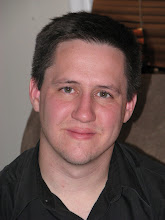Tonight was my first meeting with the League of Utah Writers, Provo Chapter. I wasn't sure if I would go, as I have started coming down with a sinus infection. It was tough making it through, but the effort was worth it.
Tonight they had a presenter, Katherine Farmer. She doesn't have a website or blog, but you can find a brief bio of her on the UVU website, as she is currently the Interim Director of the Noorda Regional Theatre Center for Children and Youth at Utah Valley University. Basically, she has spent her last 30 years running high level analysis of successful stories. Let me say here it was both awesome and slightly frustrating. Awesome because she has some incredible knowledge, analysis, and direction for writers. Slightly frustrating because she is so deep in her field and research, her presentation was overly complex and is full of technical terms that could be greatly simplified. A full college-level course (for which she is writing a textbook on this for) would allow the time to handle it, but ti seemed she simply did not adjust it for a group of diverse ages and technical backgrounds not immersed in the same field. For the rest of us who get an hour or two, it was over-the-top enough that several people left within ten minutes of their arrival.
With that out of the way, let's get to the over-view of what was taught. I can't make copies of the material, as it's all part of the upcoming textbook.
The basic premise is that most people can intuitively understand if a story is a comedy, tragedy, drama, farce, etc. We don't spend a long time analyzing it, we simply know the feelings it evokes. We can also tell if a story seems somehow incomplete or just not right. This indicates that with the right data, it should be technically possible to pinpoint the exact factors of a story that essentially created the formula for a story. Not only that, but research identified the character, world, and plot elements that make successful stories successful. She drilled it down to the point that she now can say that if a story doesn't contain the elements of successful writing that she has identified for the genre, it will have a 91% chance of failure in the marketplace.
Katherine did this by identifying first, second, and third level roles and elements. In order to be successful, certain genres need a character that fulfills a minimum of three roles, with some needing up to five.
In the first level, there is a:
- Primary Actor - the main person or group who moves the story forward
- Central Viewpoint Character - Can be active or passive, but it is who the story is told through, even if only in an episode fashion
- The Game Changer (she calls it something more complex, but I am trying to make it actually simple here) - The person or force that "changes the existing dynamic balance and starts the flow of the central story."
- The System Character - I would call this the worldview/setting and/or the champion of the story. This can change through a complex story. So this would be a mother who sets rules for her children, a faith belief system through which the story is told, etc. Nature is one of the best and most frequent System Character in children's books (nature includes death by nature, age, etc). Thing the girl drowning in Bridge to Terabithia.
- The Anti-System Role (again, changing the name here) - This is the person or event that works against the System Character, on purpose or not. Can be good or bad, but essentially this is the person who struggles against the system. Think an action fighting against the worldview of a terrorist while trying to work with Washington bureaucracy.
- The Primary Noise and Chaos Creator - Essentially the person or force that is most responsible for the "noise and chaos in a story's action." Usually functions as the dark side of a story, it can also be the same character as the Anti-System role in certain types of tragedies and modern dramas where the character is struggling with themselves. Otherwise this could be the serial killer who keeps killing, or Lord Voldemort from Harry Potter. Using that last example, sub-plots or episodes can have different ones, such as Snape, Malfoy, etc.
- The Hero - It can be represented in six basic ways (not going into, these are basic), but recognize that one is there may be no hero. So your hero can be good or bad, tragic, roguish , etc. You get the idea, and all can be expanded in some way.













6 comments:
Wow, that was awesome Matt! Thanks for taking the time to share that.
I have heard good things about Katherine but didn't know where to find her research.
This might be a lot to ask but could you give us a case study of something familiar. Can you show us some characters that envelope the 3-5 elements? I guess I just need a couple more examples to wrap my brain around the concept
Have I mentioned how cool I think your blog is? One day I'll have to make mine cool like yours ;)
My wife has attend several of her classes, and I have attended a workshop by her assistant. This is excellent material. In fact, I use some of this in my own workshops. But it is difficult to grasp, and somewhat complex to explain.
I'm anxious to learn more!
My mind just exploded. Thanks for sharing that!
I was there too--so much to take in! I want to look at my stories and see which roles everyone has. I think this is just the info I needed to make my book more exciting--more conflict--for the right reasons.
Post a Comment